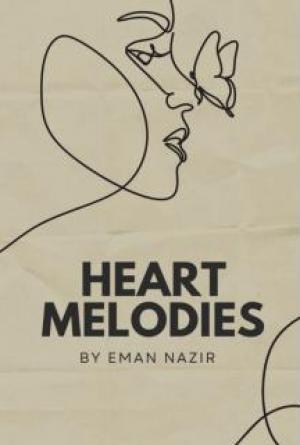II. HIS LIFE AND TIMES
Joshua Reynolds was born at Plympton in Devonshire in the month of July 1723. His father, the Rev. Samuel Reynolds, master of the local grammar school, was a scholar, and gave his boy the best education at his command, intending to make him a doctor when he grew up. But the lad's talent developed early, his hands were busy with the pencil at a very early age, and at a time when to most lads reading is a labour rather than a pastime, he was mastering the elements of perspective and studying a "Theory of Painting" by one Richardson. This precocious interest in art was not to be overlooked, and the Rev. Samuel Reynolds giving up the idea of the medical profession for his son, sent him in his seventeenth year to London as pupil to a portrait painter named Thomas Hudson, a man of some temporary repute. He stayed there for three years, and then a series of troubles with his master culminated in a final quarrel, and the boy, for he was hardly more, left London for his native county, and set up in Devonport as a portrait painter. His gift was already sufficient to gain recognition, and the patronage of local people was neither denied nor delayed. Among them was Lord Mount Edgecumbe, who was not content to have his portrait painted, but, being convinced that the young artist had talent, did all that in him lay to help its development. Portraits were painted in large numbers at Devonport, many are known to-day, but for the most part they are not classed with the master's great achievements. A natural gift and three years' association with Thomas Hudson could not make the Reynolds we know and admire. It was for Italy to do this and Lord Mount Edgecumbe made Italy possible by introducing his protégé to Commodore Keppel, a distinguished sailor, who, on receiving a Mediterranean command in 1749, invited his clever friend to accompany him. Naturally the offer was not slighted; by the summer of 1749 the young painter was in the Eternal City copying masterpieces. But he did not copy in any slavish fashion; it was his firm belief, and one he was to expound to students in days to come, that copying is a delusive industry and keeps the gifts of composition and invention dormant, so that for lack of proper exercise they lose their vitality. His mind was at once synthetical and analytical; he set himself to discover the foundation of the excellence of the masterpieces, and many of his copies were in a sense mere notes for his own future guidance. He wanted assistance to develop himself; he had no wish to speak in the language of any of the mighty dead. Yet his power of making an effective copy must have been remarkable. Sir Walter Armstrong, to whose life of Reynolds reference has been made already, thinks that one of the Rembrandts in our National Gallery is no more than the copy by Sir Joshua of an original. For three years the painter laboured diligently, not only among the Michelangelos in Rome, but among the works of lesser men in Padua, Turin, Milan, and Paris. He had learned enough in England to call the old masters to his aid on the Continent, he could appreciate all their canvases could tell him and, when he returned home in his thirtieth year, he was fully equipped to take a high place among his fellow artists and to pave the way to a supremacy that only Gainsborough and Romney could challenge.
He had not come unscathed through more than three years of foreign travel, a fall from his horse in the island of Minorca left his face permanently scarred. Far more serious was the chill contracted in the Vatican that brought about the deafness from which he suffered for the rest of his life. He reached Devonshire in the autumn of 1752, took a brief holiday there, and then, on the advice of his patron Lord Mount Edgecumbe, decided to try his fortune in London. Some of his biographers say he went to Great Newport Street, but it is more correct to say that his first studio was in St Martin's Street, from which he moved to Great Newport Street, staying there till 1760, when he made his last change to 47 Leicester Square, a house still standing and largely devoted to auction rooms to-day.

Age of Innocence
(National Gallery)
This delightful study of a little barefooted girl, wearing a white dress and seated on the grass, was bought for the Nation at the sale of Mr Harman's pictures. It has been engraved by S. W. Reynolds, Chas. Turner, and others, but the sitter has not been traced.
One of his first London portraits was a full length study of his sailor friend Keppel, and that piece of work seems to have been the foundation of his London fortunes; he never looked back. Soon the studio was crowded; one sitter succeeded another; the painter had no time to do more than work. His household affairs were watched by his sister Frances, who does not appear to have been an ideal housekeeper when the work of the house grew and it became necessary to entertain and be prepared to receive friends at any reasonable hour. The painter grew rich rapidly, and when he moved, in 1760, to the house in Leicester Square, sister Frances would drive about the town in a gilded coach with coachman and footman in staring liveries. Presumably the equipage served to advertise the painter's prosperity.
For many men the rapid success would not have been good, they would have ceased to strive and would have been content to repeat themselves, but Joshua Reynolds, with his high ideals and genuine enthusiasm for work, was only stimulated by prosperity; it was powerless to spoil him. While his work was increasing in power he was selecting friends from the ranks of the most distinguished scholars and thinkers in town, and while his labours were making him a bigger artist, the association with great intellects was making him a bigger man. The friendship of Edmund Burke and Dr Samuel Johnson alone would have been enough to have lent distinction to the painter's life. He was a great admirer of the lexicographer, and has left an appreciation of his character, while the old man's last words to him were an exhortation to read the Bible regularly and not to paint on Sundays.
To many people Reynolds is known best as the first President of the Royal Academy, and it is necessary in dealing, however briefly, with the story of his life to point out how the Academy came into being. Down to the middle of the eighteenth century exhibitions of modern work would appear to have been unknown. London's interest in fine arts was strictly limited. People with plenty of money hired an artist to paint their portrait much as we should hire a painter and decorator to put a house in good order. Artists had comparatively little standing and no representative institution; art was patronised by a small section of the wealthy classes, and the masses knew little and cared less about the existence of even leading men. The Society of Arts was founded about 1754, and a Society of Artists was founded soon afterwards. Hogarth had given some pictures to the gallery of the Foundling Hospital, established by his great friend Captain Coram. Reynolds' former master, Thomas Hudson, Reynolds himself, and several others sent pictures; the gallery was open to the public and people visited it with interest and pleasure. The possibilities of regular exhibitions of modern work became suddenly apparent then, and members began to form associations for the development of common interests. The Society of Artists received in 1765 a certificate of Incorporation from King George III., and became the Incorporated Society of Artists of Great Britain with a membership of more than two hundred. Now in this country it is only necessary to establish one society in order that several other societies may establish themselves in opposition, emulation, imitation or something of the kind, and it was quite in the order of things for the Free Society of Artists to enter into competition with the Incorporated Society. There were many intrigues, and some of the men who had the ear of the King, chief among them, it is said, William Chambers the Architect and Benjamin West, brought about the establishment of the Royal Academy. King George signed the Constitution of the new body, which started with thirty-six members including two ladies, Angelica Kauffmann and Mary Moser. William Chambers accepted the office of Treasurer, while Goldsmith and Dr Johnson represented Ancient History and Ancient Literature respectively. To the astonishment of many people the Presidency was offered to Joshua Reynolds. His brother artists wanted him, but King George III., who was not remarkable for his artistic perceptions, preferred the work of Benjamin West, and is said to have been unable at first to subscribe to the Academy's choice. The part Reynolds played in the business that led to the collapse of the Incorporated Society and the establishment of the R.A. remain unknown to this hour. To all outward seeming he stood quite aloof from the intrigues, for a part of the time of their occurrence he was travelling on the Continent; yet those who have studied his life history closely and noted the abundant and subtle diplomacy that marked his public as well as his private life, suspect that his influence was behind many of the developments of those stirring years. Be this as it may the fact remains that he did not at once accept the offer of the Presidency; he asked time to consider and to consult his friends, and Benjamin West was sent to persuade him before he would give a favourable answer. What a pity that there was no painter at hand to defeat Benjamin West persuading Joshua Reynolds to become first President of the Royal Academy! Certainly, if the latter was pulling the wires he did the work in fashion quite inimitable. Having held out sufficiently he gave in, and a year later received from King George the honour of Knighthood.
It is characteristic of Sir Joshua Reynolds that, having become President, he should be at great pains to justify his new position. It was not an empty honour, the annual exhibition would need and demand proof of his accomplishment and industry, while, as the Academy was to be a teaching Institution, he saw himself face to face with the necessity of finding time to prepare addresses for the benefit of the students. Perhaps the best praise to be given to these discourses on art is the reminder that they are still in steady demand, indeed, they are the most accessible guide to their author's methods. His grasp of principles, his breadth of view and critical insight are all the more attractive because of the ease and fluency with which they are expressed. To the man who has never held a paint brush as well as to the novice in art and the old experienced hand, there is a definite appeal. He shows one and all that his triumph as a portrait painter is not a mere affair of happy chance, but the logical outcome of certain principles followed without concession. Many moderns will not see eye to eye with him, they may ever hold that he was quite mistaken in many of his views, but the change of fashion and the modification of thought are of less importance than the fact that Sir Joshua accepted, followed, and taught certain theories and lived in the light of them. Nearly one hundred and fifty years have passed since the Academy was established, but it has not produced another teacher like Reynolds. He had not exhausted his honours when he came to be President; in years to come he was to become painter in ordinary to the King and to be entrusted with a considerable commission by that remarkable woman the Empress Catherine of Russia. He was a welcome guest at many of the most beautiful homes in England and he travelled abroad extensively, but nothing kept him from his Presidential duties until the last year of his life brought sickness in their train.

Duchess of Devonshire and Child
(Chatsworth)
This picture, sometimes known as "The Jumping Baby," is in the possession of the Duke of Devonshire at Chatsworth. When first seen some people found fault with it, Horace Walpole among the number, but it has gained popularity with age. The composition is very skilled, but the Duchess is perhaps rather too much en grande tenue to appear as nurse.
When we consider the ill fortune of the Incorporated Society and the Society of Artists and remember how actively men intrigued then, as now, it is not difficult to see that the Royal Academy owes a heavy debt to Sir Joshua, who may be said to have nursed it with the greatest care during its infancy and was such a generous contributor to the walls of its annual exhibition that he is said to have sent nearly two hundred and fifty pictures during his term of office. The first Exhibitions were held in Pall Mall, but during Sir Joshua's lifetime there was a move to Somerset House. To 1838 the annual display was transferred to the National Gallery, and in 1869 Burlington House became the centre of activities that increase in volume if not in interest year by year.
It is impossible to compile a list of the distinguished men and interesting women who sat to Sir Joshua, but a very brief resume may be made of some of the most familiar. The three Ladies Waldegrave, Georgiana, Duchess of Devonshire, Lady Cockburn and her children, Mrs Master as Hebe, Miss Kitty Fisher, Miss Nelly O'Brien, Mrs Lloyd, the Honourable Lavinia Bingham, Angelica Kauffmann, Mrs Hoare and her baby, Countess Waldegrave and daughter, Mrs Siddons as the Tragic Muse, The Graces decorating a Terminal Figure of Hymen, the Duchess of Devonshire and baby—here we have a few of the female portraits by which the painter would have achieved success if he had painted no others.
He painted four or five portraits of King George III., two of his wife, and two of George IV. as Prince of Wales; the number of peers is legion. Among statesmen Edmund Burke sat to him five times and Charles James Fox four. Brinsley Sheridan sat twice and Horace Walpole three times. Other men sitters of note were Bartolozzi the engraver, Dr Burney, David Garrick, Dr Johnson, Boswell, Oliver Goldsmith, Gibbon the historian, Tobias Smollett and Laurence Sterne. Of himself Reynolds painted between forty and fifty portraits.
Successful as he was in expressing the moods of men and the fascination of women, it is impossible in writing of the charm of Reynolds to forget the part the children play in his work. It would be hard indeed to find a painter who has expressed the joy and happiness of childhood with equal effect. Some of the children so depicted are seen with their mothers, and one feels that the portrait was painted more for the mother than for the child; but there are many canvases from which the children alone smile at us, captured for our time in all their youthful radiance though some have lain for a century dead. The children of Lady Smythe stand happily apart from their rather self-conscious mother, and among the single-figure portraits of children are Lady Catherine Pelham Clinton, Lady Caroline Howard, Miss Emma Hart (afterwards Lady Hamilton), Charles, Viscount Althorp, Miss Bowles the Strawberry Girl, "The Age of Innocence," "The Infant Samuel," and many others that the mind and the memory love to dwell upon. How pleasant it is to remember that Nature so careless of the individual is so careful of the type that it blossoms anew with every generation!
Having written, however briefly, of the children in Reynolds' picture, it seems unnecessary to say more of his charm; they will stand for it until the end comes, the hour when the pigments can endure no longer and the labour of the master is ended.
There is little to add to the story of Sir Joshua after he became President of the Royal Academy. Down to 1789, when sickness came suddenly upon him, his was a prosperous career, passed in the most stimulating company of his age, associated with foreign travel and delightful English holidays. Only once in all these later years does his critical insight appear to have failed him, and this was when he went to Holland and remained unmoved by the work of Franz Hals. What, one wonders, did he see or fail to see when he stood before the portrait of the Laughing Cavalier and the musician (Der Vaar), the painter's wife and the market girl? Londoners mourned when Reynolds' life came to an end, and they buried him with much pomp and ceremony by the side of Sir Christopher Wren. But he may well be content with the measure of his own immortality. No British portrait painter has seriously challenged his supremacy, and few may hope to rival his output. The Graves and Cronin catalogue mention three thousand pictures and probably leave well over a thousand unnamed. It is possible for the amateur to name a hundred examples of his portraiture, any of which would have justified a claim to posthumous honours.









